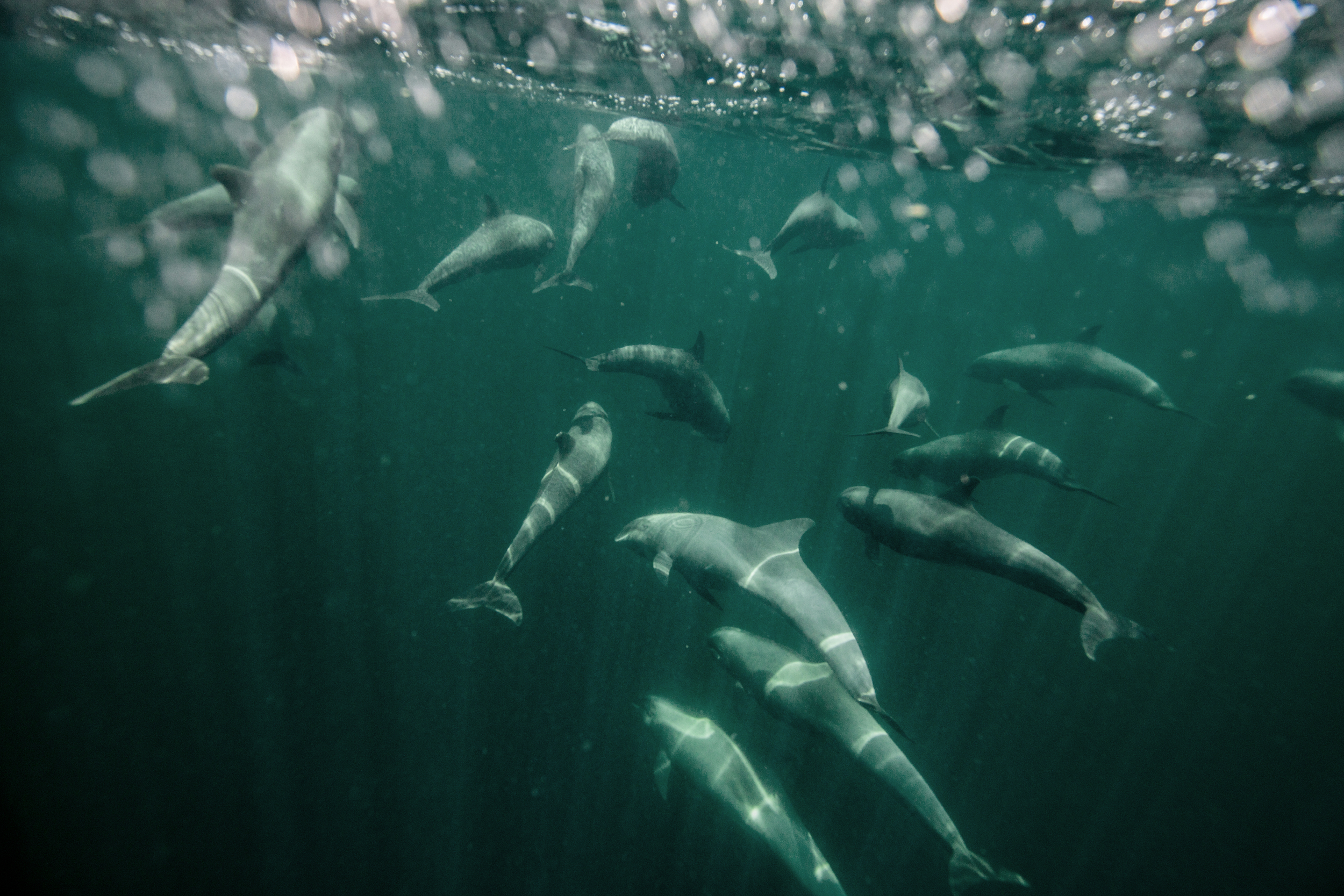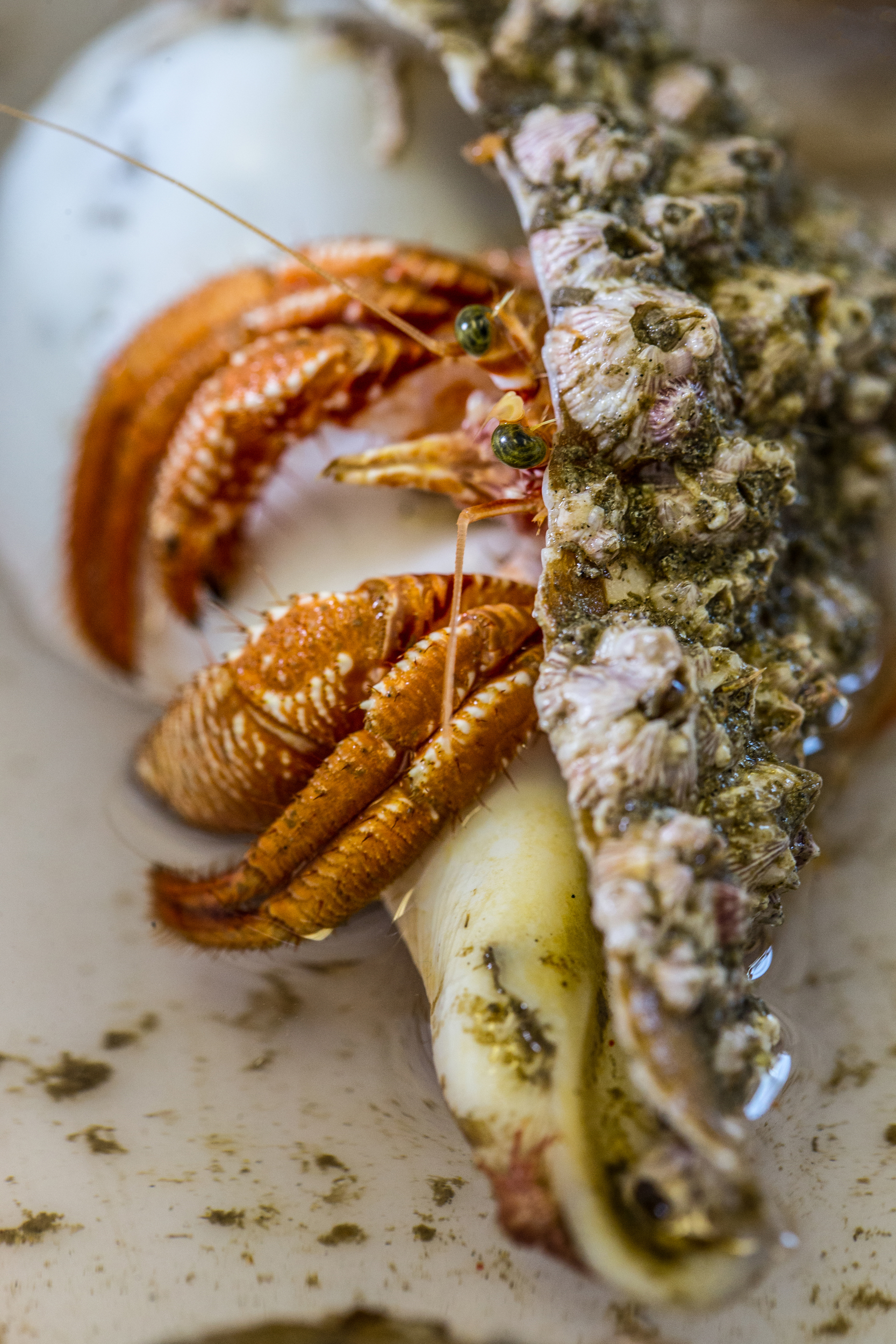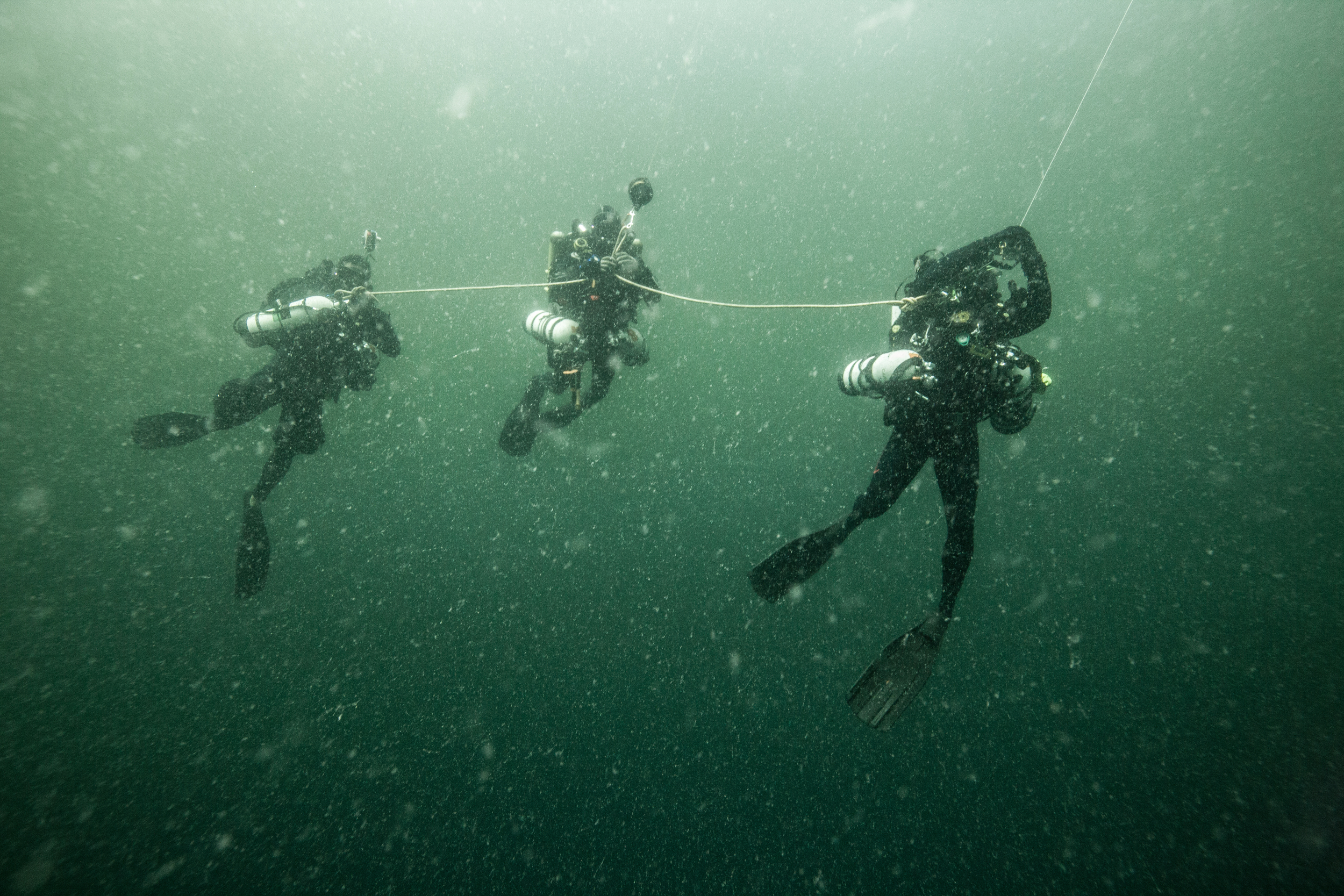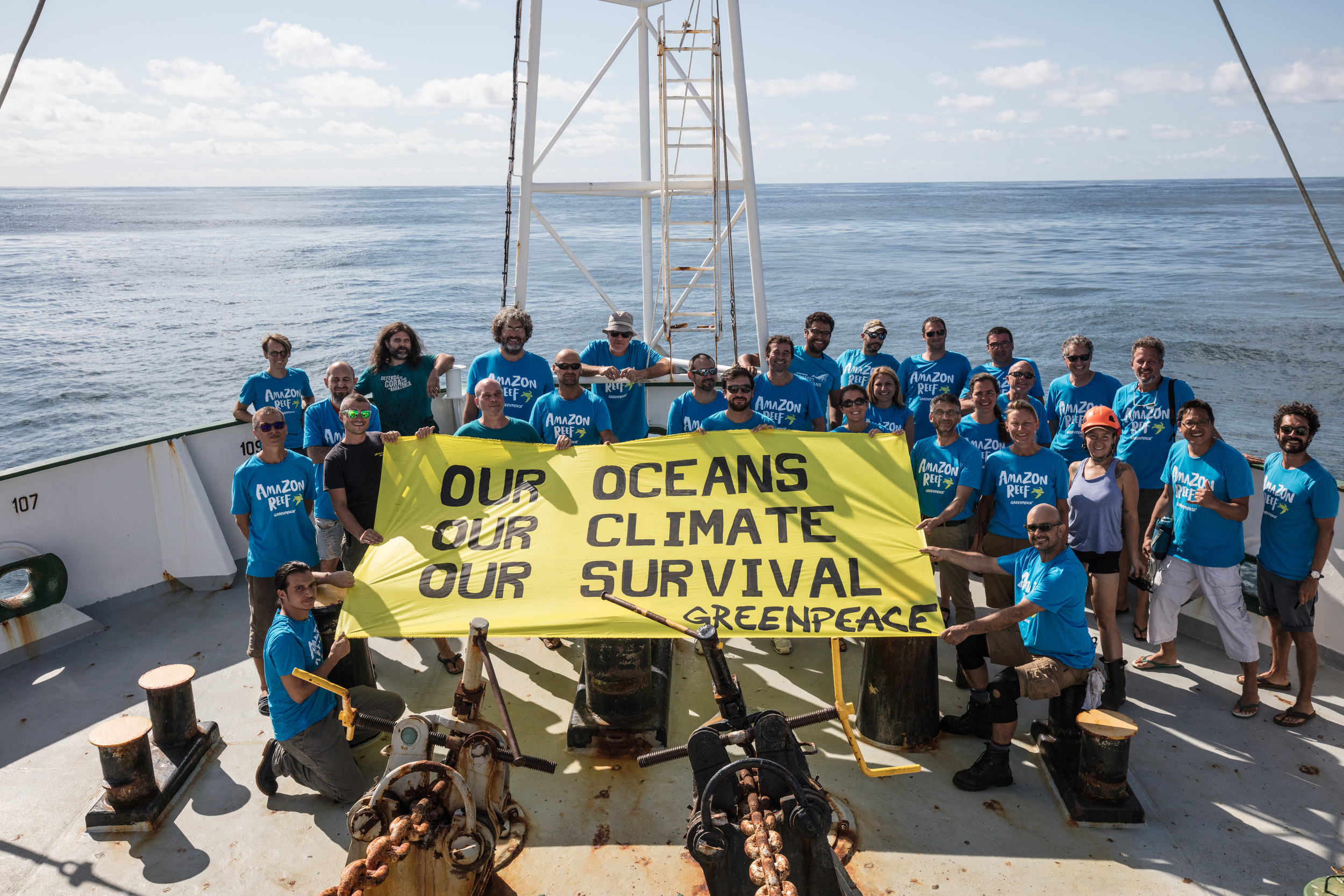The Amazon Reef, located in the Atlantic Ocean off the coast of French Guiana and Brazil, “flabbergasted” scientists when its discovery was first revealed in 2016.
The huge 600-mile long reef exists below the muddy waters at the mouth of the Amazon River – the largest river in the world, where every day one fifth of the world’s fresh water flows into the ocean.
Last year, two million people successfully campaigned to protect the reef from oil giant Total. But now thanks to the anti-environmental agenda of the Brazilian government, this unique region is once again under threat, and could be opened up to oil exploration very soon.
That’s why this year a crew of Greenpeace activists, scientists and divers braved rough seas and challenging weather to head back to the Amazon Reef region to reveal its beauty and expose the threats it faces.
Here are five things you need to know about the Amazon Reef, including how you can help protect it.
1) It’s teeming with life
The Amazon Reef ship team spotted over 40 different species of animals. Everything from melon-headed dolphins and pygmy killer whales to silky sharks – and yes those are their actual names!
Some animals live there all year long, but for others – whales, dolphins and sea turtles – the Amazon Reef region is a key part of their migration route.
Scientists on board the Greenpeace ship also confirmed for the first time ever that the region is also a place that whales come to give birth and feed their young.

A pod of melon-headed dolphins in the Amazon Reef. © Pierre Baelen / Greenpeace
2) The Amazon Reef holds important insights for our future
Coral reefs are usually found in shallow water where sunlight can reach them. But the Amazon Reef goes against this logic – in some parts it’s located as deep as 220m.
You might think that the absence of light should have made this part of the seabed a desert, but it’s actually home to over 70 different species of fish, hermit crabs and spiny lobsters to name a few – making it an exciting mystery for scientists.

A hermit crab from the Amazon Reef collected by scientists in the Amazon Reef. © Pierre Baelen / Greenpeace
On our most recent expedition, divers went down 100m for the first time to collect samples to help us better understand how the reef works.
As climate change is causing poor conditions for reefs all over the world, scientists believe the Amazon Reef may be able to help us form important predictions for the future of our oceans.

Deep divers successfully completed the first human dives ever made on the recently-discovered Amazon Reef © Pierre Baelen / Greenpeace
3) It’s vital for our fight against climate change
Places like the Amazon Reef, with all their marine life, play a key role in sustaining our planet. Marine life naturally absorbs and stores carbon, making healthy oceans one of our best defences against the worst impacts of climate change.
We can’t rely on this natural process to tackle climate change alone – we need to halt carbon emissions too.
But it’s vital that we also protect areas like the Amazon Reef by creating a network of ocean sanctuaries, or the climate crisis will become even worse.

Greenpeace crew on the Esperanza during the Amazon Reef leg of the Protect the Oceans Expedition. © Pierre Baelen / Greenpeace
4) An oil spill in the region would be devastating
Since 2013, companies have been trying to exploit Amazon Reef region area for oil. In 2018, two million people came together and the Brazilian government rejected Total’s bid to drill for oil – in a monumental win for nature.
But it was clear back then that the reef wasn’t safe for good. Now, BP are still pushing for a permit to drill for oil near the reef. And thanks to the anti-environmental agenda of the government in Brazil, they may soon be granted one.
If BP is given the green light to drill for oil it could have devastating consequences for this beautiful region, and all the amazing wildlife that live and breed there – not to mention the world’s oceans and climate.
5) The good news – people power can protect the Amazon Reef again
Over the next six months we have a historic opportunity to protect our oceans. And this time we can put part of the Amazon Reef region off-limits for good.
Governments have started negotiating a Global Ocean Treaty. If they get it right, it will protect a third of our global oceans — making it one of the biggest conservation projects in human history!
Add your name calling for governments to secure an ambitious Global Ocean Treaty.



